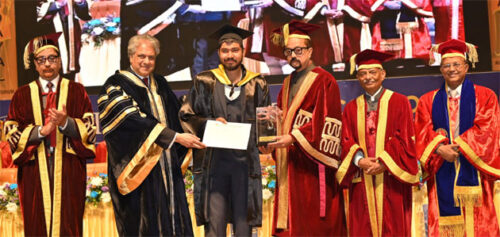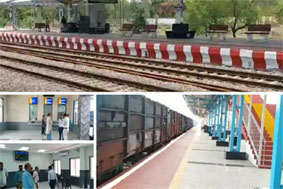What Is Fog Computing? Definition, Functions, Everything To Know

Both velocity and safety at fog nodes are different potential points that demand attention. This is as a result of both fog and mobile edge computing aim to reduce latency and improve efficiencies, however they process information in barely different places. Edge computing typically happens directly the place sensors are attached on units, gathering data—there is a physical connection between information supply and processing location. Fog computing is a computing structure in which a sequence of nodes receives knowledge from IoT units in real time.

This helps predict tools failures earlier than they occur, stopping expensive downtime and selling safety. Self-driving cars — Fog computing allows automobiles to course of sensor data (like traffic lights and obstacles) locally, enabling quicker decision-making for autonomous driving options. The storage options at every sensor level depend on the type of sensors supported by the organization. Big media libraries work finest with rotating disks, whereas native flash chips are ideal for safety keys, log recordsdata, and tables. Anything that requires massive in-memory storage needs an information server, though this should be avoided from the fog structure altogether.
Monitoring Services
Wearable units and residential health monitors collect important indicators and different health knowledge from sufferers. Fog nodes process this data locally to provide quick suggestions, set off alerts for abnormal readings, and assist in real-time diagnostics. For example, within the case of a affected person with a coronary heart situation, a wearable gadget can monitor coronary heart fee and send knowledge to a nearby fog node. The fog node can analyze the information in actual time, detect irregularities, and alert healthcare providers promptly, enabling timely intervention and lowering the danger of important incidents.
One of the most important challenges in fog computing is security, which isn’t as simple with a decentralized, local setup. All information transmission have to be encrypted, especially since the transfer mode is primarily wi-fi. Application signature validation is another crucial step with utility service requests. Even when stored temporarily, sensitive person information is sure by compliance regulations. User habits profiling is one other function that provides an additional layer of safety.
What’s Infrastructure As Code?
This localized processing minimizes latency and bandwidth utilization, making fog nodes essential for real-time purposes. Fog computing is outlined as a decentralized computing infrastructure that extends cloud computing to the edge of the network. It goals to enhance efficiency and reduce the amount of knowledge sent to the cloud for processing, storage, and evaluation. Deploy strong orchestration and management tools to streamline the deployment, configuration, and monitoring of fog computing assets. Use centralized administration platforms to orchestrate workflows, manage configurations, and automate tasks throughout fog nodes.

Some processors are clever enough to fill the data based on historical information if a quantity of sensors fail. Because IoT gadgets are often deployed beneath difficult environmental conditions and in occasions of emergencies, circumstances could be harsh. Fog computing can enhance reliability under these situations, decreasing the info transmission burden.
The Means Ahead For Edge Computing: Micro Information Facilities Are Redefining Safety And Sustainability
In order to operate efficiently, smart cities must respond to rising and falling calls for, reducing production as needed to stay cost-effective. This signifies that sensible grids demand real time electrical consumption and production data. These sorts of good utility systems often aggregate data from many sensors, or want to face up to remote deployments. The aim of edge computing is to bring the info sources and devices nearer collectively, eliminating the time and distance to course of.
This reduces the gap throughout the network that customers should transmit data, improving efficiency and general network efficiency. Promote interoperability and cling to industry standards to facilitate seamless integration and compatibility between fog computing elements and existing infrastructure. Choose open requirements and protocols for communication, information exchange, and interoperability to avoid vendor lock-in and promote interoperability throughout heterogeneous environments. Participate in industry consortia and initiatives centered on developing interoperable fog computing options and promoting standardization efforts. However, it ought to be emphasised that some network experts imagine fog computing to be nothing greater than the Cisco brand name for one type of edge computing. Although fog computing is a comparatively latest addition to the cloud computing paradigm, it has gained substantial traction and is well-positioned for expansion.
Fog computing is a time period for expertise that extends cloud computing and services to the sting of an enterprise’s network. It allows knowledge, functions, and different sources to be moved nearer to, and even on prime of, finish customers. Also generally known as edge computing or fogging, fog computing facilitates the operation of compute, storage, and networking providers between finish devices and cloud computing knowledge facilities. Only by understanding what resources prospects need, the place they need these sources, and when the support is needed can businesses respond to consumer demand quickly.
Considering the numerous positives and accelerants of fog computing, corporations want to contemplate this technique as naturally as they contemplate cloud computing whereas building their infrastructure. Smart cities aspire to be automated at each entrance, from garbage assortment to traffic management. Sensors are arrange at site visitors indicators and highway limitations for detecting pedestrians, cyclists, and autos. Speedometers can measure how fast they’re touring and the way doubtless it may find yourself in a collision. Traffic indicators mechanically turn pink or stay green for an extended time based mostly on the information processed from these sensors. The rollout of the 5G community has improved this concern, but limited availability, lower speeds, and peak congestion are all issues.
- Besides integration with other fog nodes, the fog engine should additionally seamlessly integrate with the present cloud resolution.
- Instead of sending all of their data to the cloud, related industrial machines with sensors and cameras now acquire and analyze knowledge regionally.
- It then forwards more advanced tasks or filtered knowledge to the cloud for additional analysis.
- Fog computing is a type of distributed computing that brings computation and knowledge storage closer to the network edge, the place many IoT gadgets are located.
- The structure includes deploying, managing, and maintaining numerous fog nodes distributed across totally different areas.
- These vehicles must be succesful of ingest information from an enormous variety of sensors, perform real-time information analytics after which reply accordingly.
This is why all cloud vendors include their very own access management system, which can be used with third-party id and entry management (IAM) options. With fog computing, the fog layers act as a intermediary between the user and the cloud. This signifies that the fog engine should know who’s requesting the service, and the identical authorization process and policies maintain good here. Enterprises tend to go for a centralized approach with technical infrastructure as administration becomes simple.
All safety updates and patches must be utilized with a set process and schedule in place. The most prevalent example of fog computing is maybe video surveillance, on circumstance that steady streams of movies are giant and cumbersome to switch across networks. The nature of the concerned data ends in latency issues and community challenges. Video surveillance is utilized in malls and different massive public areas and has also been carried out in the streets of quite a few communities.
Current Network Safety Articles
The Fog World Congress is highlighting this trend by highlighting this developing expertise. Unfortunately, many states are still not Industry 4.0 prepared, and distant industrial facilities frequently lack the ultra-fast internet connections required for interconnectivity. After all, an industrial plant that is completely networked produces a quantity of hundred terabytes of information each day. This leaves enormous volumes of information that cannot be centrally handled utilizing well-established applied sciences or wirelessly downloaded from the cloud.

This is often carried out to improve effectivity, though it may additionally be carried out for safety and compliance reasons. Fog computing is a decentralized computing infrastructure by which information, compute, storage, and purposes are located somewhere between the data source and the cloud. Rather than sending all knowledge to a centralized cloud for processing, fog computing brings the computing nearer (or to the “edge”) to the gadgets generating the info.
Ginny Nichols, a product line manager for Cisco, first used the phrase “fog computing” in 2014. This computing approach is named “fog” because it concentrates on the sting of the community. With the popularity of fog computing, IBM created the time period edge computing to explain a related computing approach. When administration will get less complicated, businesses incessantly select a centralized strategy for his or her technological infrastructure. The installation of a dispersed assortment of heterogeneous fog devices introduces further compatibility and maintenance issues. Finding the proper of hardware and software to go together with each sensor is essential.
Fog Computing Vs Edge Computing
Quality of Service (QoS) parameters corresponding to resource utilization, throughput, performance, response time, cost, and power consumption can all be enhanced with load-balanced fog layers. Monitoring companies often embody utility programming interfaces (APIs) that hold monitor of the system’s efficiency and useful resource availability. Monitoring methods ensure that all end gadgets and fog nodes are up and communication isn’t stalled. Sometimes, waiting for a node to release could additionally be more expensive than hitting the cloud server. Monitors can be utilized to audit the present system and predict future resource requirements primarily based on utilization. Fog computing is a decentralized infrastructure that places storage and processing parts on the fringe of the cloud, the place knowledge sources such as software customers and sensors exist.

In distinction to Mist, the place intelligence is elective, Fog brings intelligence down to the underside of the cloud structure. Fog computing implementation involves either writing or porting IoT functions at the community edge for fog nodes utilizing fog computing software, a package fog computing program, or other tools. Those nodes closest to the edge, or edge nodes, take in the knowledge from different fog computing definition edge gadgets similar to routers or modems, and then direct no matter information they absorb to the optimum location for evaluation. Develop a scalable and resilient fog computing architecture that may accommodate growth and stand up to failures. Distribute computational resources throughout a number of fog nodes to prevent single points of failure and ensure redundancy.
Since each entail moving processing and intelligence nearer to the place the information is produced, the words fog computing and edge computing are sometimes used interchangeably. Although fog computing could probably be accomplished for security and regulatory considerations, this is frequently accomplished to increase effectivity. Because sensors — such as those used to detect site visitors — are often connected to mobile networks, cities typically deploy computing assets near the cell tower. These computing capabilities enable real-time analytics of traffic information, thereby enabling traffic signals to reply in real time to changing situations. Fog computing is a form of distributed computing that brings computation and data storage nearer to the network edge, the place many IoT units are situated.
How And Why Is Fog Computing Used?
Setting up a decentralized set of heterogeneous fog gadgets throws up new challenges by way of upkeep and compatibility. Fog computing is a decentralized infrastructure that places storage and processing elements at the edge of the cloud. Connected manufacturing devices with cameras and sensors present one other nice instance of fog computing implementation, as do systems that make use of real-time analytics.







